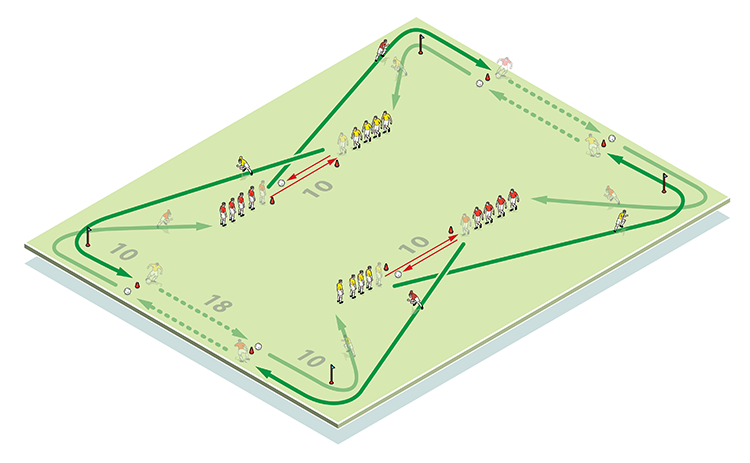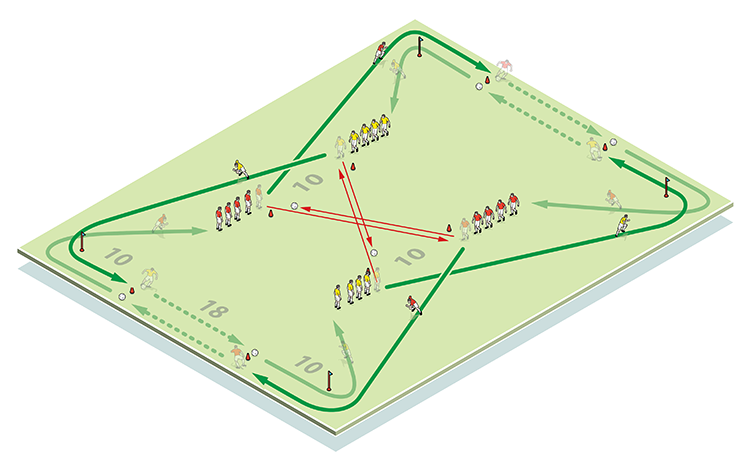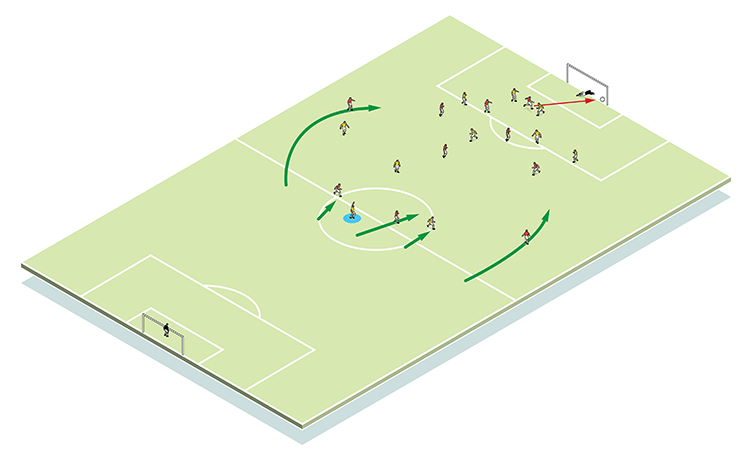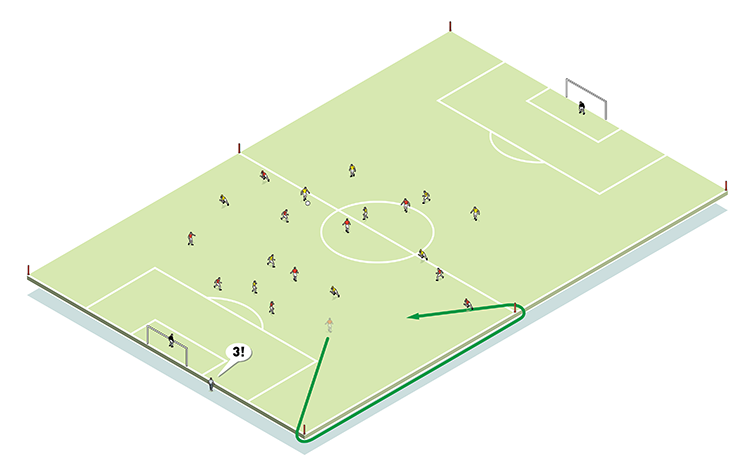




OUR BEST EVER OFFER - SAVE £100/$100
JOIN THE WORLD'S LEADING PROFESSIONAL DEVELOPMENT PROGRAMME
- 12 months membership of Elite Soccer
- Print copy of Elite Player & Coach Development
- Print copy of The Training Ground
Pre-season fitness plan
This is a pre-season fitness plan that gets players back into shape in time for the start of the new season. It uses a ball in each practice and helps players combine technical skills with positioning and movement, both as drills and team games.
| Area | Up to a full pitch |
| Equipment | Balls, cones, goals, poles |
| No. of Players | Up to 11v11 |
| Session Time |
Circuit 12mins, Box game 20mins, Halves game 23mins, 11v11 games 30mins |
This is a pre-season fitness plan that gets players back into shape in time for the start of the new season. It uses a ball in each practice and helps players combine technical skills with positioning and movement, both as drills and team games.
This is a great plan that has been utilised at a number of sides I have coached. It’s workable for players of any level and any age.
What do I get the players to do?
Circuit
This is a circuit that practises passing and running both with and without the ball. It would typically follow a 15-minute warm-up with the conditioning coach.
Setting up as shown (1), reds at the front of each line begin by passing the ball forward to a yellow, who stops it. Each red runs diagonally up and around the flag. Moving along the top, he dribbles the ball from one cone to another, stops it at the second, then runs around the second flag before joining the back of the line.
1

Yellows make the same movement in the other direction so that both teams are working.
We run this twice - one minute at high intensity, with a one-minute rest in between.
As a progression to boost aerobic capacity, we ask for one-touch passing to start. We’ll will need at least eight men per line as the demands are great on players to get around the circuit quickly. Alternatively, we can use the same number but reduce the area size.
We’ll also ask players to make different passes - diagonally before making a straight run (2); then passing straight before making a diagonal run to the opposite corner flag (which removes the dribbling task).
2

Box game
Here, two pitches work at the same time with coaches overseeing each.
Setting up as shown, three or four passes must be made for a point to be awarded (3). The ball is fed back to the coach in that square, who transfers it into a new quarter (4). All players must then run over into the new possession quarter. This is best of three with the winning team having scored the most points – 5 minutes per game, with 90 seconds rest in between.
3

4

Halves game
Again, two pitches work at the same time. The team out of possession can send across up to four players to press and win the ball (5, left pitch). If successful, they switch the ball back into their own half, then retreat ready to keep possession themselves. Any team that kicks the ball out relinquishes possession.
To progress, we can add a keeper at each end - the team in possession uses this player to help keep the ball (5, right pitch).
5

2. On the right pitch (example two), there is a ‘keeper’ at each end who supports the team in possession. Four yellows are pressing on this occasion
11v11 games
The Halfway line game encourages players to attack and defend as a team, working forwards and backwards continuously. A goal only counts if every player on the team (apart from the keeper) is on or over the halfway line to support the attacking play. If all of defending team are not back in their own half when the opposition scores, the goal is doubled (6a).
6a

2. In addition, they are awarded an extra point as one yellow player failed to get back into his own half in support of his team mates
This game encourages players to attack and defend as a team. Good concentration is vital, with incentives (and penalties) for not working as a unit.
The second game, called Numbers game, includes high intensity sprints and introduces smaller numbers in a big area at certain moments in the game (which means more distance to cover and an increase in aerobic demand). Each outfield player in the team is numbered between 1 and 10. On the coach’s command, the player called out must sprint around, firstly, one of the six poles; then, as a progression, two poles, before he can return to the game (6b).
6b

This game encourages aerobic activity and is useful in helping the coach manufacture overload situations.
What are the key things to look out for?
In each game we’re looking for teamwork, communication, passing, running and movement skills. Although basic, these are key elements where pre-season training is concerned because everything we go on to coach throughout the course of the campaign is based around these specific foundations.
Related Files
Editor's Picks
Attacking transitions
Deep runs in the final third
Using the goalkeeper in build-up play
Intensive boxes drill with goals
Penetrating the final third
Creating and finishing
My philosophy
Pressing initiation
Compact team movement
Coaches' Testimonials

Alan Pardew

Arsène Wenger

Brendan Rodgers

Carlos Carvalhal

José Mourinho

Jürgen Klopp

Pep Guardiola

Roy Hodgson

Sir Alex Ferguson

Steven Gerrard
Coaches' Testimonials

Gerald Kearney, Downtown Las Vegas Soccer Club

Paul Butler, Florida, USA

Rick Shields, Springboro, USA

Tony Green, Pierrefonds Titans, Quebec, Canada
Join the world's leading coaches and managers and discover for yourself one of the best kept secrets in coaching. No other training tool on the planet is written or read by the calibre of names you’ll find in Elite Soccer.
In a recent survey 92% of subscribers said Elite Soccer makes them more confident, 89% said it makes them a more effective coach and 91% said it makes them more inspired.
Get Monthly Inspiration
All the latest techniques and approaches
Since 2010 Elite Soccer has given subscribers exclusive insight into the training ground practices of the world’s best coaches. Published in partnership with the League Managers Association we have unparalleled access to the leading lights in the English leagues, as well as a host of international managers.
Elite Soccer exclusively features sessions written by the coaches themselves. There are no observed sessions and no sessions “in the style of”, just first-hand advice delivered direct to you from the coach.








